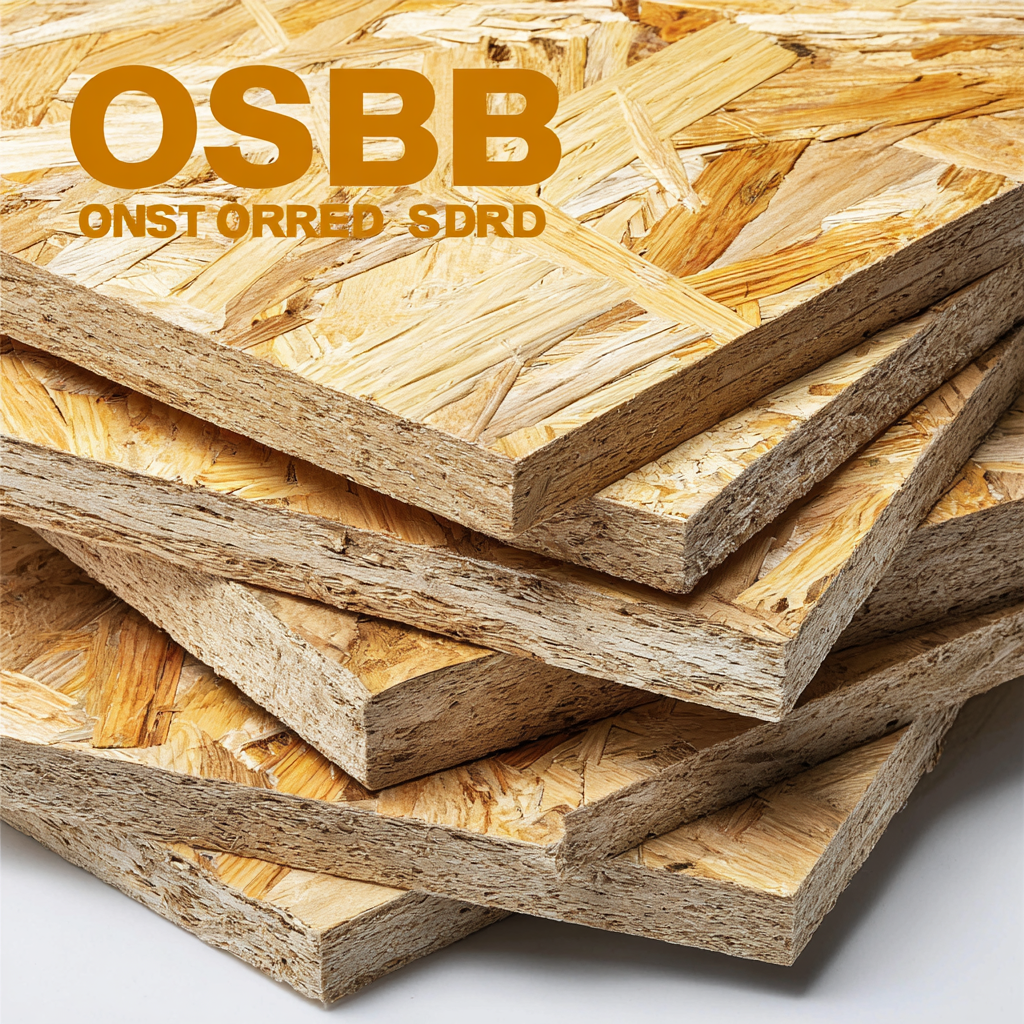In recent years, China's Osb Board Wood has emerged as a remarkable symbol of excellence in the global market, showcasing the nation's export power and commitment to quality manufacturing standards. As the demand for engineered wood products continues to rise, the production of OSB (Oriented Strand Board) has gained significant attention due to its versatility, sustainability, and cost-effectiveness. This blog will explore the rigorous industry production standards that govern the creation of Osb Board Wood, ensuring that it meets both domestic and international requirements. Additionally, we will provide insights on how to select the best OSB products for diverse applications, from construction to furniture manufacturing. Join us as we delve into the fascinating world of Osb Board Wood and discover how it has positioned itself as a key player in the global wood market.

The rise of OSB (Oriented Strand Board) production in China has marked a significant shift in the global wood product market. Over the last decade, Chinese manufacturers have optimized their production processes, leading to enhanced quality and efficiency. This transformation not only meets the growing demand for building materials domestically but also positions China as a leading exporter of OSB boards worldwide. With superior strength, versatility, and cost-effectiveness, OSB boards have become a key component in construction, furniture, and packaging industries.
When selecting OSB boards, consider the type of project and environmental conditions. For outdoor projects, opt for moisture-resistant OSB to ensure durability. Additionally, always check for certifications that indicate compliance with safety and environmental standards. This not only guarantees the quality of the board but also reflects responsible sourcing practices.
Investing in high-quality OSB from reputable suppliers can significantly affect the longevity and sustainability of your projects. Engaging in strategic partnerships with local producers can offer advantages such as reduced shipping costs and shorter lead times. By staying informed about market trends and technological advancements, businesses can leverage China’s burgeoning OSB production to their benefit in the competitive global market.

China’s OSB (Oriented Strand Board) boards have gained recognition for their exceptional quality and durability, becoming a preferred choice in various construction and woodworking applications. One of the defining features of these boards is their structural strength, which is achieved through the innovative layering of wood strands. This method not only enhances the load-bearing capacity but also ensures uniformity, making them ideal for flooring, wall sheathing, and roofing.
Another key aspect of China's OSB boards is their resistance to moisture and environmental factors. Advanced manufacturing techniques, including the use of high-quality adhesives, contribute to their durability even in humid conditions. This resilience makes them suitable for both indoor and outdoor uses, catering to the diverse needs of builders and designers. Additionally, the environmentally conscious production process often involves the use of sustainable wood sources, aligning with the growing demand for eco-friendly materials in the industry. China’s commitment to quality and sustainability continues to bolster its position as a leader in the global OSB market.
The OSB (Oriented Strand Board) industry in China is experiencing transformative changes as innovative technology paves the way for enhanced manufacturing processes. Reports indicate that advanced machinery and automation have improved production efficiency, allowing manufacturers to reduce waste and lower costs by up to 15%. Cutting-edge technologies, such as precision CNC machinery and state-of-the-art drying kilns, play a pivotal role in achieving higher quality boards that meet international standards.
Moreover, the integration of AI and data analytics into the manufacturing process has revolutionized quality control. According to a recent market report, the use of AI has resulted in a 20% increase in product consistency and a significant decrease in defect rates. This technological evolution not only bolsters the competitiveness of Chinese OSB exports but also enhances the industry's overall reputation for quality and sustainability.
Tips for manufacturers aiming to harness these technologies include investing in training for staff to operate new machinery effectively, embracing lean manufacturing principles to streamline processes, and fostering partnerships with tech innovators to stay ahead of industry trends. By focusing on these areas, OSB producers can enhance their operational efficiency and product excellence, solidifying their position in the global market.
The global construction and furniture industries are witnessing a surge in demand for oriented strand board (OSB), and China has emerged as a leading producer of this versatile wood product. The unique combination of affordability, durability, and eco-friendliness makes Chinese OSB boards highly sought after across various markets. As nations seek sustainable building materials to meet environmental regulations, Chinese OSB offers a compelling solution, positioning it as a pivotal player in international trade.

Among the key markets driving this demand are North America and Europe, where construction activities are ramping up and the need for reliable materials is at an all-time high. Manufacturers and builders appreciate the resilience and lightweight nature of OSB, making it a preferred choice for everything from flooring to wall sheathing. With China's robust export infrastructure, the country is well-equipped to cater to the growing needs of these markets, providing quality products that adhere to global standards. The opportunities for expansion are vast, inviting collaborations and partnerships in the woodworking sector worldwide.
The OSB (Oriented Strand Board) industry in China is becoming increasingly recognized for its commitment to environmental sustainability. Recent reports indicate that the European wood-based panel market is projected to grow significantly, with a compound annual growth rate (CAGR) of over 4% from 2023 to 2033. This growth is partly fueled by a demand for greener building materials that are both functional and eco-friendly. China’s OSB manufacturers are responding to this trend by adopting sustainable harvesting practices and investing in advanced technologies to minimize waste and reduce carbon footprints.
Furthermore, with the increasing pressure on industries to adhere to more rigorous environmental standards, China's OSB production is leading the way in green practices. Utilizing fast-growing wood species such as poplar and eucalyptus not only provides a renewable resource but also helps in maintaining ecological balance. Reports suggest that sustainable wood-based panels, including OSB, are becoming favored in construction due to their lower environmental impact and excellent performance characteristics. As the market expands, China's commitment to environmental sustainability is poised to enhance its status as a powerhouse in the global OSB industry, reflecting a perfect synergy of quality and ecological responsibility.
This chart illustrates the growth in sustainable production practices within China's OSB industry over the past five years, reflecting a commitment to environmental sustainability.
